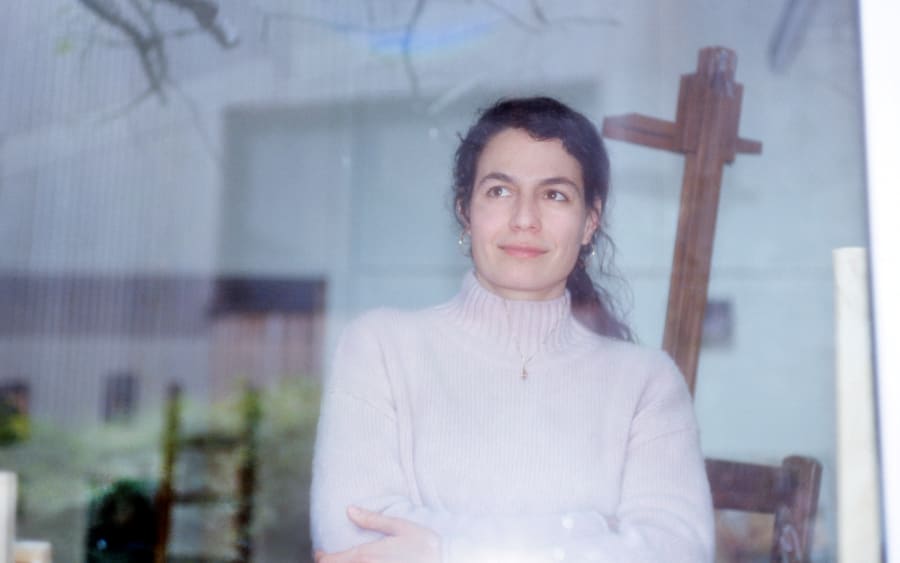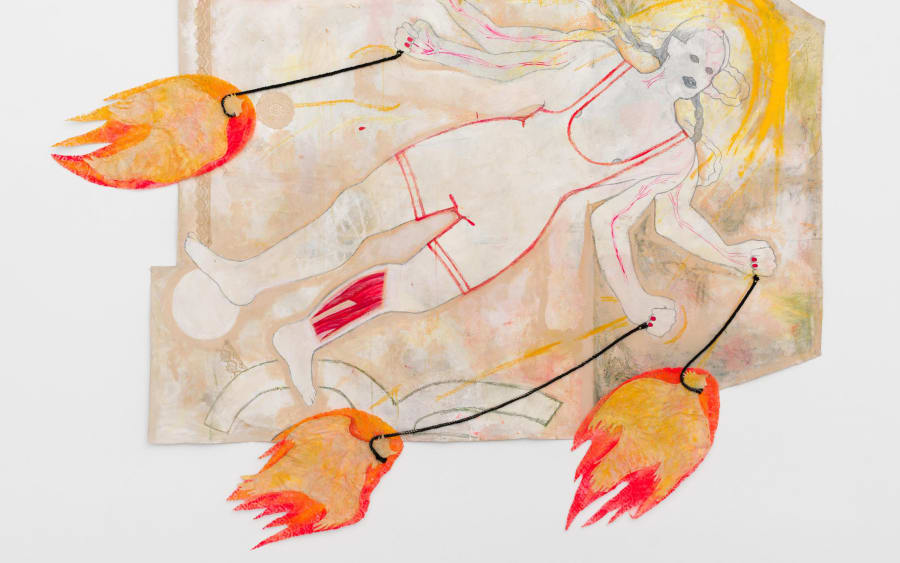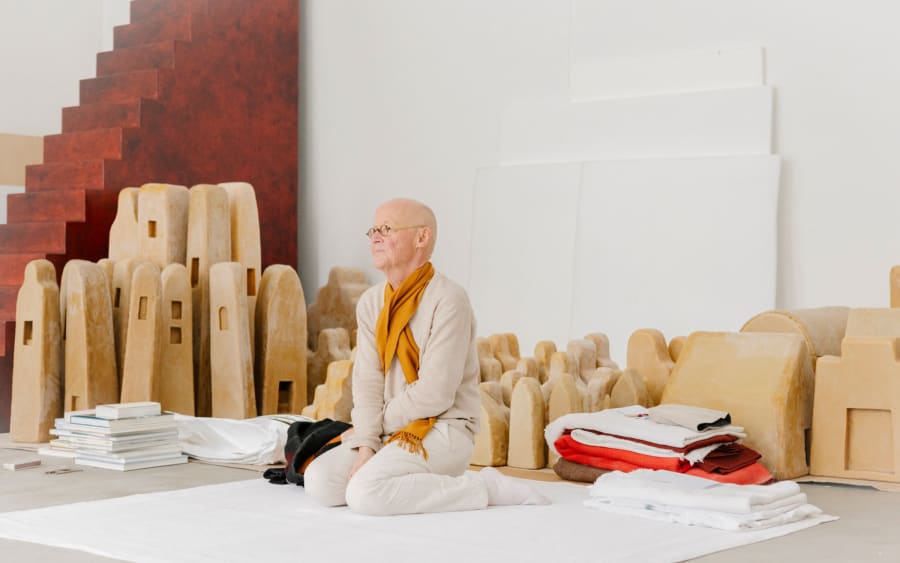In Paris, skateboarding and Modern art have long been found in close proximity. Indeed, the surroundings of the Musée d’Art Moderne de Paris are prime grounds for the sport’s afficionados, who make the most of its stark yet grand architecture. The sound and sight of boards hitting concrete has become ubiquitous on the museum’s central plaza.
Made an Olympic sport in 2020, skateboarding is now set to also take over the museum’s insides – thanks to Dutch-American photographer Ari Marcopoulos. ‘Beware,’ an exhibition of photographs and a long-lost video by the artist, opens this month. The show also features 24 works drawn from the museum’s 15,766 deep collection, selected by Marcopoulos.
Ari Marcopoulos was born in Amsterdam in 1957 and moved to the United States in 1980. Upon arriving in New York, he became a printing assistant to Andy Warhol, and after that, a photo assistant to legendary American photographer Irving Penn. ‘As much as I learned what to do from them, I also learned what not to do,’ Marcopoulos recently told Art Basel. As a self-taught photographer, his practice emerged from an early interest in cameras and pictured motion, and a fixation on the extreme architecture of the modern urban space. Together these became the core tenets of his best-known works.
New York’s cityscape is everywhere in Brown Bag (shot 1993/4; edited 2020), a film that sat undeveloped in a paper bag of ephemera until it was rediscovered when Marcopoulos was moving studio a few years ago. ‘I knew the World Trade Center,’ says Marcopoulos, ‘and as a kid I went up to the top as a tourist, when friends came over I would take them there. It was cool to be up so high there. As a child I was obsessed with facts: the longest bridge, at one time the Brooklyn Bridge, the highest building... at one point the World Trade Center was the highest building.’
Among the skyscrapers and hemmed-in streets of Lower Manhattan that are the stage for much of the work shown, the Brooklyn Bridge and the World Trade Center loom large. The Brooklyn Banks, the area below the Brooklyn Bridge on the Manhattan side, was a skate mecca. The World Trade Center is now gone, its evaporation a televised event etched deep in collective memory. After 9/11, the Brooklyn Banks were closed for many years, and became a contested space among urban developers, the city, and the skater community. A small portion of the Banks was reopened to skaters in 2023 as the first phase in a new revitalization of the area.
This sense of disappearance and what remains is aesthetically coded into Brown Bag, the portraiture exhibited of the era, and the photo book published to accompany the exhibition. The black-and-white photography and moving images have a viscous feel to them, as if the dynamic movement of skateboarders moving through space was captured not by the camera’s cold mechanical shutter, but in some sludge-like ether that holds its subjects in that moment.
Legendary figures of the skating world such as Harold Hunter and Justin Pierce are portrayed here, figures made famous by American filmmaker Larry Clark’s Kids (1995), the contentious film that tracks similar places and people as Marcopoulos. They are works that have an almost spectral sense of a place and its people, magnified perhaps by Hunter and Pierce’s early deaths.
A particular sequence within Brown Bag brings this uneasy sensation fully to bear. A skater, filmed from behind, barrels down the middle of a Manhattan street; the camera pans up, chaotically following the windows up the Twin Towers, then plunges back down to the skater speeding towards them. The camera goes up again, then down again.
‘It’s an abstract shot, but the architecture of the building is so iconic that it can’t be mistaken for anything else,’ Marcopoulos says. However, it would be remiss to presume the works are a form of anthropological documentation. ‘I am not studying these people,’ the artist says. The work instead demonstrates a practice deeply rooted in human empathy and personal preoccupation. ‘I was fascinated by [skating], over a 5, 6-year period,’ he says. The interest was driven by skating as an action, a reinterpretation and reformulation of public space. While in some ways Brown Bag is a work of found, or at least rediscovered footage, there is a more profound sense that the work provides living narratives of the human body in concrete environments.
Marcopoulos became obsessed with ‘the spectacle of it,’ he says, which skaters carry out ‘for themselves, for whoever might be interested, and it becomes a performance; interpreting space and how it functions is integrated into their activity… architecture is central to skateboarding, they interpret architecture in a different way, a broken pavement becomes a ramp.’
Among the works Marcopoulos selected from the collection of the Musée d’Art Moderne de Paris to accompany his own, one can find French-Hungarian photographer Brassaï’s documentation of Parisian graffiti in the early 1930s, and Juliette Gréco and Miles Davis photographed around a trumpet in 1949 by French photographer Jean-Philippe Charbonnier. The other works include a personal selection by Marcopoulos of 20th-century visual art, including Hans Bellmer’s La poupée (1938) and Giorgio de Chirico’s Piazza d’Italia con sole spento (1971). The 21st century makes an appearance too, with an assemblage by young New York-born artist Akeem Smith titled Somewhere in Fletchers Land (2023): a small photo of a woman pulling aside her underwear, engulfed by a rusted metal framework evoking urban space, and the human swallowed up within it. Through this selection, Marcopoulos builds a referential network in art history from which his photography has drawn inspiration.
Building a career-wide arc, the framed photographic portraits by Marcopoulos span from the early 1980s until December of last year. While presenting Marcopoulos classics, like his 1995 portrait of Iggy Pop, there is also a series of color portraits of people in the artist’s life today. And what does all of this mean, to look back to the past not as nostalgia, but as a reformulation of what has led to our present? The moral of the story resides in the title of the show. ‘“Beware,”’ Marcopoulos says, ‘alludes to the darker sides of things, to pay attention, to be aware, to be.’
Ari Marcopoulos is represented by galerie frank elbaz (Paris).
‘Carte blanche à Ari Marcopoulos – Beware’
Until August 25, 2024
Musée d’Art Moderne de Paris
Andrew Hodgson is a writer and researcher based in Paris. He published the book object New Forms of Art and Contagious Mental Illness with New Documents in January 2023.
Caption for top image: Ari Marcopoulos, Brown Bag, 1994 /2020. Paris Musées / Musée d’Art Moderne de Paris.
Published on April 5, 2024.


